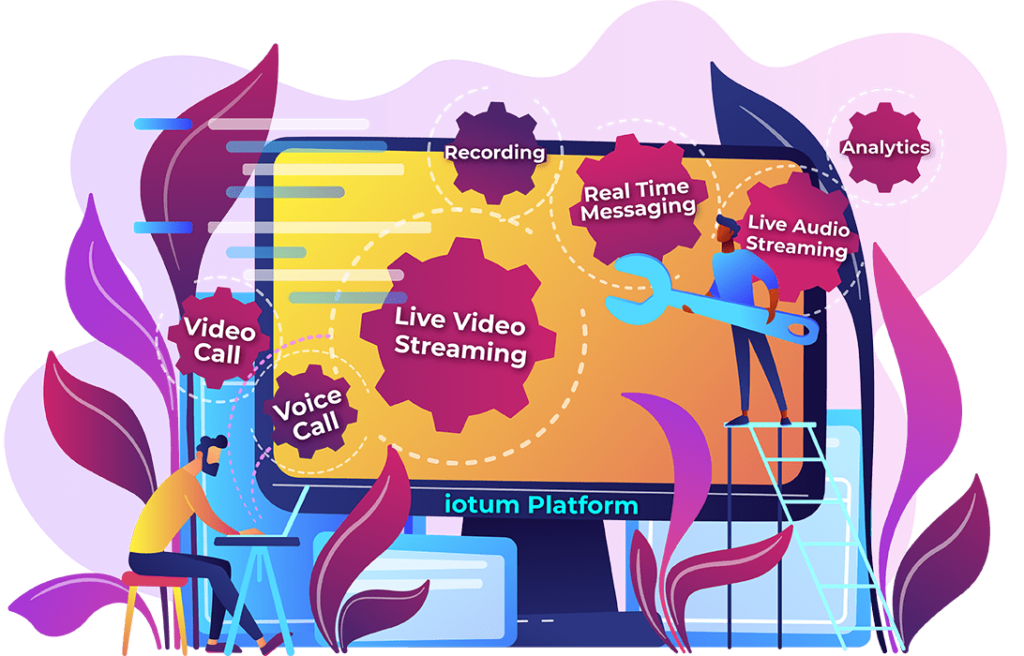 If there’s anything we’ve learned as we step into a new decade, it’s that video conferencing has completely transformed the way we communicate with each other safely and from a distance.
If there’s anything we’ve learned as we step into a new decade, it’s that video conferencing has completely transformed the way we communicate with each other safely and from a distance.
We knew the advantages, but since being faced with a global pandemic, we’ve had no other choice than to virtually get closer, reshape business online and rely on video conferencing solutions for higher education.
Video conferencing is instrumental to the success of future students. If it wasn’t part of the curriculum in the beginning, going forward, it will be. Educational institutions are seeing the benefits of learning in an online space.
Here’s why education flourishes with video conferencing solutions:
- Collaboration Grows From Local To Global
 Everyone can read a book and acquire knowledge. But it’s when we can visualize and collaborate, we can actually retain information and learn at a higher level – especially with digital tools like screen sharing, YouTube live streaming, and more. Video conferencing technology is able to bring learners from all corners of the world into one space. As a result, people with different opinions, experiences, beliefs, and upbringings add to the richness of learning. Cross-cultural bonding and sharing happen within the container video conferencing provides. In turn, this opens the conversation and fosters online learning environments which later become the incubators for ideas to forge a wider understanding. Now that’s collaborative learning!
Everyone can read a book and acquire knowledge. But it’s when we can visualize and collaborate, we can actually retain information and learn at a higher level – especially with digital tools like screen sharing, YouTube live streaming, and more. Video conferencing technology is able to bring learners from all corners of the world into one space. As a result, people with different opinions, experiences, beliefs, and upbringings add to the richness of learning. Cross-cultural bonding and sharing happen within the container video conferencing provides. In turn, this opens the conversation and fosters online learning environments which later become the incubators for ideas to forge a wider understanding. Now that’s collaborative learning! - Distant Learning Becomes Empowered
Learners who are in more rural locations with a lack of infrastructure and resources can benefit greatly from an education that has a robust video conferencing component. An educational solution that comes with a focus on digital learning can include:- Pre-recorded resources (webinars, lectures, etc.)
- A digital library
- Live and pre-recorded webinars
- Video recordings and/or live streaming of lectures
- Group breakout sessions during an online class or lecture
- Extra help with tutors in online meetingsPlus, learners get the added benefit of learning and connecting with each other. Video conferencing provides text chat for asking questions without interrupting the lecture or class. Students can send a question or make a comment privately or for everyone to see. Furthermore, they can feel extra supported by reaching out to teacher’s assistants for extra help or finding a tutor for more focused learning. Group work is still possible as well as group discussions and conversations.
- Curriculums Are Strengthened
There was a time when the majority of learning took place on a blackboard or a large, paper flip chart with markers. Nowadays, video conferencing offers us a more contemporary and impactful alternative; high definition videos with crystal clear audio and the opportunity to be immersed visually and experientially. Now, there are hyper-realistic virtual field trips to be a part of and learn from. Other ways curriculums have taken shape to be more expansive; video offers a way to connect with professionals overseas, collaborate with other students from different schools or people in different countries or alumni. This pattern of learning that creates a two-way dynamic proves to be more engaging and opens up a whole new approach to integrated learning. - Self-Paced Learning Is Rampant
With classes and learning materials that are on-demand and prerecorded, learners can stand to benefit from video conferencing. Students, whether teenagers or adults seeking post-secondary education or continued learning, may find that studying online allows for more flexibility. When learning is self-paced, learners can balance their personal commitment to their education. Especially for stay-at-home parents, or people with a full-time job, or employers who are running a company. Classes can be scheduled and recorded to save now and watch later. Archives, student portals, even assignments can all live and breathe online and be downloaded and worked on when required. - Educators Can Be Present From Wherever
 For teachers, professors, and staff, a curriculum that relies on video conferencing means freedom and flexibility. They can be full-time or part-time and take their work with them on the go. Also, online learning helps to manage teachers’ time. There’s always the struggle of managing lesson planning, with teaching, grading, and marking report cards. With a video conferencing solution, time is cut down. Assignments and follow-ups can be uploaded in a chat or via an online whiteboard. Students can use video conferencing for their online presentations that include digital elements like videos, media, links, and images. Plus, assignment submissions are fast and easy. There’s no paper, printing, or photocopying involved.
For teachers, professors, and staff, a curriculum that relies on video conferencing means freedom and flexibility. They can be full-time or part-time and take their work with them on the go. Also, online learning helps to manage teachers’ time. There’s always the struggle of managing lesson planning, with teaching, grading, and marking report cards. With a video conferencing solution, time is cut down. Assignments and follow-ups can be uploaded in a chat or via an online whiteboard. Students can use video conferencing for their online presentations that include digital elements like videos, media, links, and images. Plus, assignment submissions are fast and easy. There’s no paper, printing, or photocopying involved. - Administration Is Streamlined
Regardless of how large the student body is, the administration of any institution (online or brick and mortar) has to be a well-oiled machine. Video conferencing in the field of education isn’t solely for students needing to learn. In fact, it’s a very essential admin tool that keeps communication free-flowing between departments. Video conferencing for administration can look like:- Sending out administrative updates
- Planning and conducting parent-teacher interviews
- Training staff members
- Recruiting volunteers
- Meetings with the school board
- Student services and enrollment
- Mentorship programs
- Disciplinary action
Video conferencing opens up the learning floodgates making it more collaborative through face time connections, instant feedback, and engagement. Plus, it’s inclusive and unites students no matter where they are.
Let FreeConference.com work to give learners an online education that prepares them for the real world. Whether part of the curriculum is online or all of it, everyone benefits from the accessibility, affordability, and ease it offers for students, teachers, and admin.
Use features like Screen sharing, Gallery and Speaker View, and Video Conferencing to bring learning to a higher potential.


